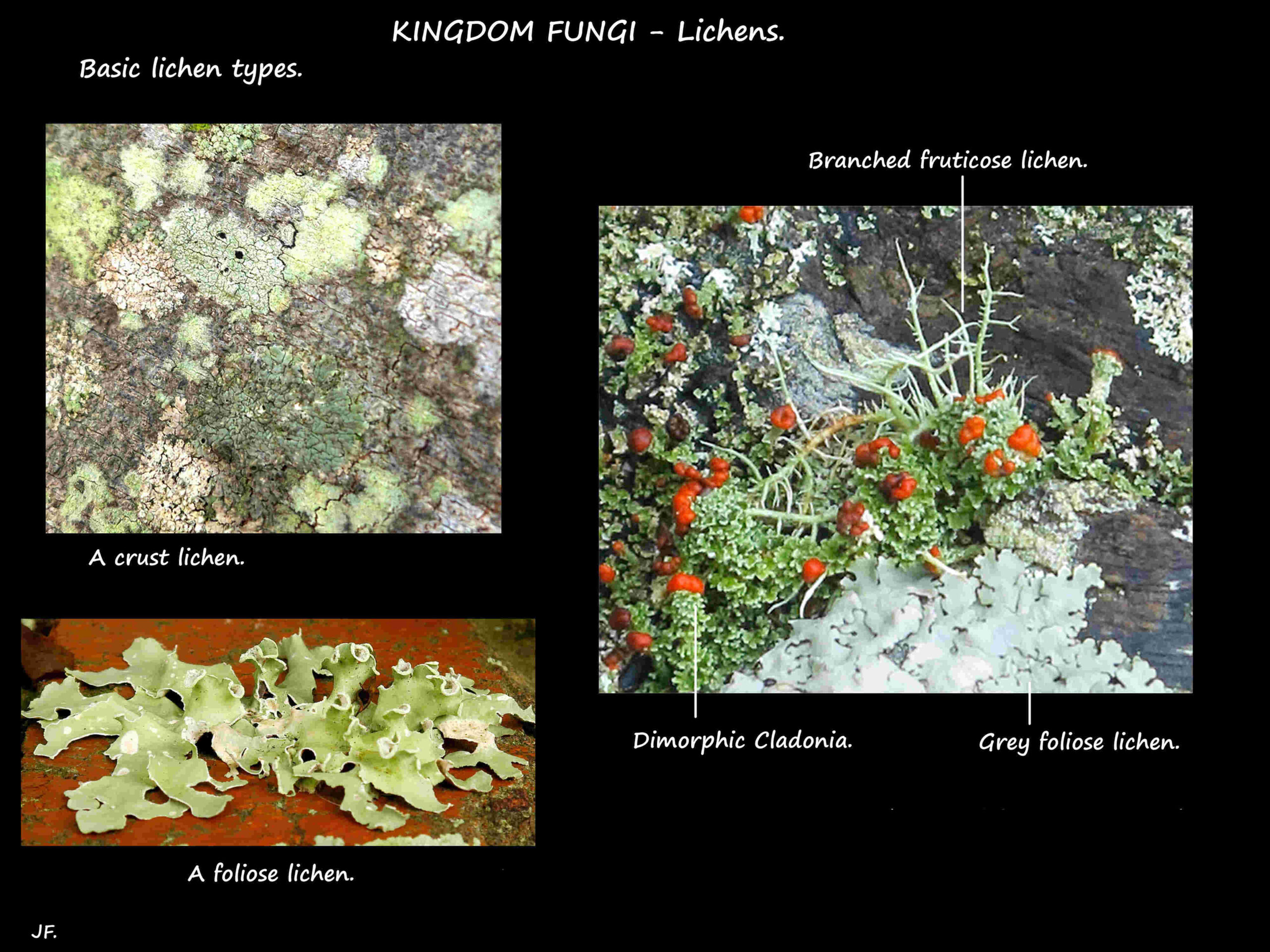Lichen growth forms.
Some lichens are easily visible as flat crusts, leafy rosettes or long filaments but others are microscopic.
They are divided by the shape and appearance of the thallus into 3 main types and a number of smaller ones.
Due to variations is growth, one type may look like another and there are intermediate forms that can be difficult to classify.
In some the reproductive structures are the most prominent part.
The three main growth forms are crustose, fruticose and foliose.
Dimorphic thalli are combinations of two of these forms e.g. Cladonia.
Crustose or crust lichens.
These are two dimensional but so firmly attached to the substrate the lower surface is not visible and they
usually cannot be removed without damaging them.
They usually do not have a lower cortex or rhizines.
When a crust thallus grows in the substrate the reproductive structures are the only part visible.
Some have a hypothallus of just hyphae forming a band at the edge.
The thallus may be just a few structureless granules (also known as leprose lichens) or highly organised with
lobes like a foliose lichens but with no lower cortex.
The surface can be smooth or rough; with or without cracks; continuous or divided into in discrete areas
(rimose or areolate depending on the position of the photobiont cells).
They are found on rocks and bark and are drought resistant.
Fruticose lichens.
These are three dimensional and may be erect, bush-like, branched structures or hanging down in strands.
The branches are basically round in cross section so have no upper and lower surfaces and are surrounded by a cortex.
They are a uniform colour which helps to differentiate them from foliose lichens.
They prefer humid or foggy areas.
Foliose or leafy lichens.
These have features of both crustose and fruticose lichens.
The two-dimensional, crustose area may be small or extensive, have no lower cortex and is usually attached
to the substrate by rhizines.
The density of rhizines determines how firm the attachment is.
The foliose part consists of three dimensional, leaf-like lobes with a cortex on both sides.
The lobes can be from 0.5 to 50 mm across.
The two lobe surfaces may have a different texture and colour e.g. black, brown or white.
Foliose lichens contain the largest known species and can be up to 1 metre across.
They prefer areas of high rainfall.
Squamulose lichens.
Squamules are small, leaf-like scales or lobes which may be discrete or massed and overlap.
Most of each lobe or squamule is attached to the substrate like a crust but the tips are slightly raised.
They may form all or part of a thallus and in some Cladonia they develop on the sides of the podetia.
They may be less than 1 mm in size but in some Cladonia they are 3 mm.
Each squamule may be lobed.
These may be considered a form of crustose lichen but some resemble foliose lichens.
They have no, or a poorly differentiated cortex on the lower surface which helps to distinguish them
from small foliose lichens.
Byssoid lichens. These lack a cortex and the hyphae look like cotton wool.
Filamentous lichens where the hyphae form a sheath around filaments of the photobiont.
Leprose lichens
These are collections of tiny granules consisting of the photobiont surrounded by fungal hyphae with no cortex.
J.F.


